After 47 years as a staff writer for The Burlington (Vt.) Free Press, Mike Donoghue has advice for aspiring journalists: Be willing to do whatever needs to be done, or you’re not going anywhere.
Donoghue has embodied that attitude throughout his long career, a career rife with recognition, with induction into five Halls of Fame, including as a charter member of the New England Newspaper Hall of Fame; as a winner of both the Yankee Quill Award and Matthew Lyon First Amendment Award; being named Journalist of the Year by the New England Society of News Editors; as a National Sunshine Award winner from the Society of Professional Journalists; as a recipient of an honorary degree from Southern Vermont College in Bennington, Vt., his alma mater, in recognition of his career; as the namesake of the New England First Amendment Coalition’s Michael Donoghue Freedom of Information Award; being named 10 times as Vermont Sportswriter of the Year by the National Sportscasters and Sportswriters Association.
Donoghue happily put on whatever hat he needed to wear – sportswriter, general assignment writer, photographer, darkroom technician, copy desk. He even did a three-month stint with the Free Press editorial board.
“He’s a real bulldog as a reporter,” Ross Connelly, until recently owner, publisher and editor at The Hardwick (Vt.) Gazette, said. “He has a nose for news; he’s broken more stories statewide than most reporters ever have the chance to.”
In late October 2015, Donoghue retired from the Free Press after accepting a voluntary buyout offer from the newspaper’s owner, Gannett Co. Inc., based in McLean, Va.
Looking back nearly a half-century, Donoghue pinpointed his career beginnings to his sophomore year at South Burlington (Vt.) High School, when a teacher “cornered” him in the hallway with a demand that would shape his entire adult life.
“He says, ‘What are you doing with your life?’” Donoghue said he was unsure, but the teacher said, “You’re going to write for the student newspaper,” Donoghue recalled. “I said, ‘If I am going to do it, I want to write sports’.”
Two years as sports editor at the student newspaper ignited a passion in Donoghue, who parlayed the experience into a job at the Free Press as a senior in high school.
“I happened to be at the Free Press one day, and I said to the sports editor, ‘You going to need any help covering games this school year?'” Donoghue said. “We talked a little bit; there was a football game on Saturday. He said, ‘Why don’t you cover the game? Bring something in, and if I like it, we’ll talk.’ I brought it in; he liked it. I found a copy of it four years ago. God, is it bad.”
It was 1968, and the Free Press used Donoghue to cover high school and college sports for up to 20 hours a week. Donoghue continued writing for the Free Press while attending St. Joseph College (now Southern Vermont College). Donoghue came home to work weekends that included being the only reporter on duty on Saturday for the Free Press, which did not have a Sunday paper at the time.
Donoghue remembers that, as the lone Saturday writer, he saw “a little bit of everything,” ranging from covering the governor to a recount at City Hall to the more disturbing.
“Early on, there were two 8-year-old boys who drowned on a Friday night, so Saturday that was my assignment,” Donoghue said. “In high school, we lost some people in car accidents, but this was a lot more up-close and personal. It was a sad one. We’ll never know, but the theory is they were fishing, and one fell into the river and the other tried to help him.”
Covering news that emphasized the darker side of humanity – murder, corruption — Donoghue remained unfazed in his approach to reporting. He showed compassion while telling the story.
“They (journalists) always say, ‘We are going to write the first draft of history.’ It’s fascinating to see how things develop, whether it’s public policy with the governor, how laws are shaped — whether it’s public records, open meetings,” Donoghue said.
He was the elected president of the Vermont Press Association from 1983 to 1985 and was a driving force behind allowing the use of cameras and recording devices in Vermont courtrooms. He also got the Vermont Press Association a permanent home in the Journalism Department at St. Michael’s College. Through the years, the Vermont legislature has called on him to help improve both the Public Records Law and Open Meeting Law.
In 1998, Donoghue was one of four Americans selected to speak in Ireland at a journalism conference after the country adopted a Freedom of Information Act. He was joined by the head of the Reporters Committee for Freedom of the Press, the Center for Public Integrity, and a U.S. Justice Department freedom of information officer.
During a stint in the Free Press sports department from 1998 to 2010, he filed freedom of information requests frequently and exposed a major hazing scandal in the University of Vermont hockey program that resulted in cutting the season short. He served on the board of the National Sportscasters and Sportswriters Association and was elected its president for two terms, 2008 to 2010.
He returned to the newsroom to a newly created position of accountability reporter for his final five years at the Free Press.
In retirement, Donoghue leaves a professional legacy that had an impact on and contributed to changes in local and state public policy across Vermont.
Donoghue’s reporting on Vermont’s driving-under-the-influence laws, included buying and analyzing motor vehicle records of offenders with three or more driving-under convictions to find the state’s most frequent offenders. After Donoghue uncovered one driver with 16 such convictions, the Vermont legislature increased the maximum penalty for the third or more driving-under offense from a one-year misdemeanor to a five-year felony.
It was a few months after the investigative series ran that the driver was picked up for No. 17.
Donoghue is also widely known for his investigative reporting into police corruption in Vermont, including excessive force, evidence stealing and evidence planting. He also helped uncover a timesheet fraud case in Vermont State Police that swindled taxpayers out of about $215,000 and temporarily fattened the potential pension of a patrol commander until he went to prison.
“He is one of the most dedicated, dogged journalists I have ever met,” Adam Silverman, content strategist at the Burlington Free Press, said. “He really believes in open government transparency and holding people accountable. He is the kind of journalist who liked to break news every single day, and if he managed to ruffle a few feathers along the way, he was all the happier for it.”
In retirement, Donoghue continues to do freelance gigs. About 10 daily and a dozen non-daily newspapers have reached out to him for news and sports coverage. He also has provided color commentary for college hockey broadcasts the past two winters. For the most part, though, he is trying to focus on his health.
But Donoghue said he still has the “news bug,” and although there have been freelancing assignments, he still finds time to fight for press rights as executive director of the Vermont Press Association and vice president of the New England First Amendment Coalition. Just recently, Donoghue testified at the Vermont State House for laws protecting journalists’ First Amendment rights at the high school, college and professional levels, all levels at which Donoghue has worked.
“I’ve always had ink in my veins,” Donoghue said. “It started at a young, young age when I first went into The Burlington Free Press when I was 6 or 7 years old. I was with my father and was always fascinated by all the activity in the newsroom. So I think that will probably always stick with me.”
His father, John D. Donoghue, was a former journalist in Springfield, Mass., and in Vermont, including a stint as editor of the Vermont Catholic Tribune and as the music critic for the Free Press for 35 years. John Donoghue also is in the New England Newspaper Hall of Fame.
The landscape of professional journalism has changed dramatically from Donoghue’s first year to now. Still, he maintains a staunch optimism about the news industry.
“It’s an exciting time,” Donoghue said. “I think there will be a newspaper forever. I don’t know the format, but there is still going to be news. It was five years ago people were saying the print edition is going to be dead, and here we are.”




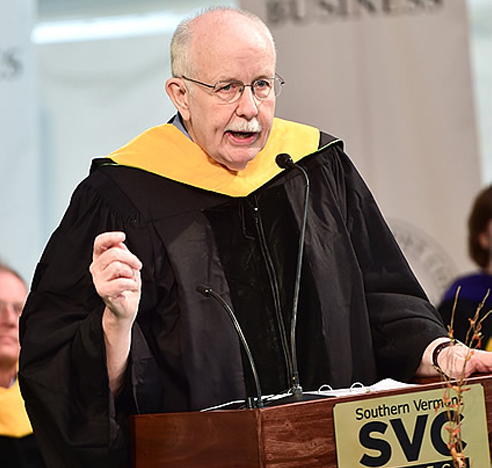
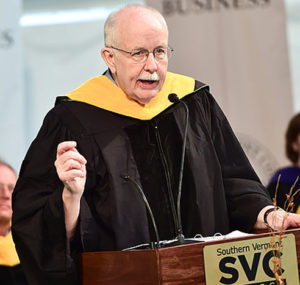

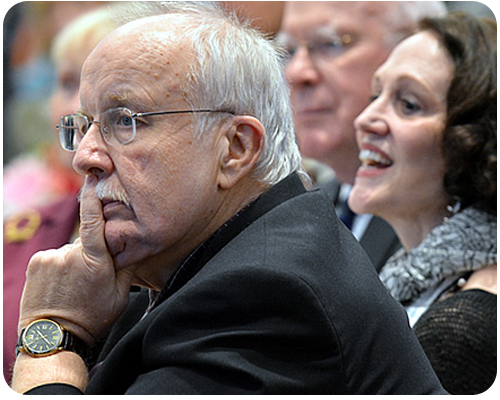

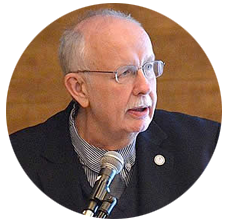
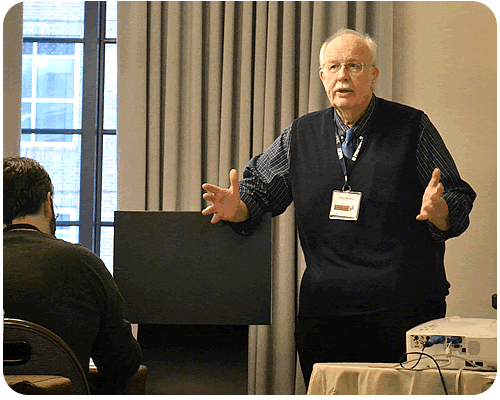

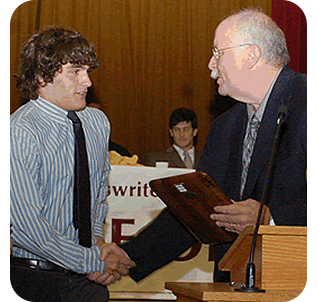
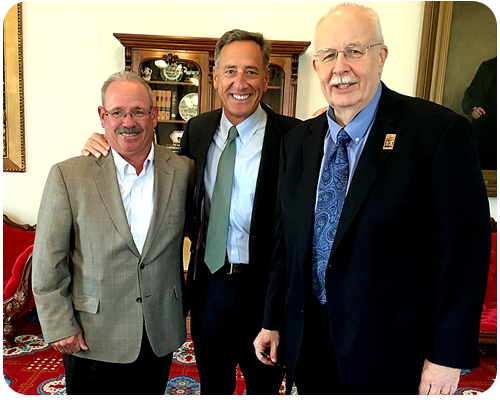








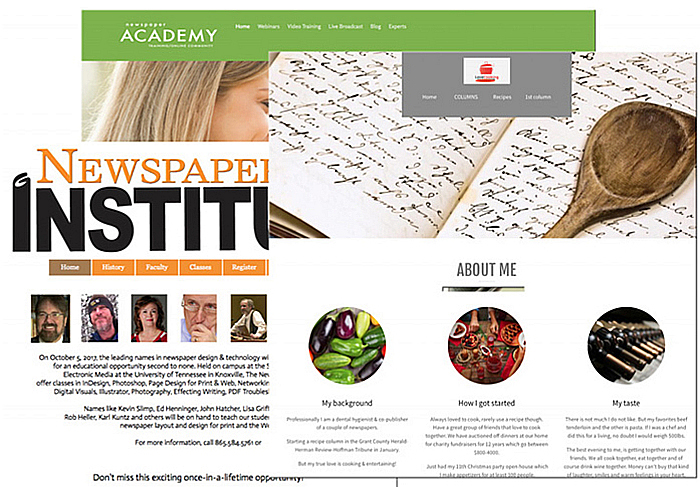
Who brings us the news? Men, mostly
Gene Policinski, inside the First Amendment
Gene Policinski is chief operating officer of the Newseum Institute and senior vice president of the Institute’s First Amendment Center. He can be reached at gpolicinski@newseum.org.
Follow him on Twitter:
@genefac
Who brings us the news? Mostly it’s still men, according to a new Women’s Media Center study, “Divided 2017.”
The report says that’s so among the major TV networks, online versions of CNN, Fox, The Huffington Post and The Daily Beast, and the nation’s 10 largest newspapers:
• Male anchors and reporters predominate by about 3 to 1 among broadcast news outlets, which the center notes is a “regression” from how things used to be. Work by women anchors, field reporters and correspondents actually declined, falling to 25.2 percent of reports in 2016 from 32 percent when the Women’s Media Center published its 2015 “Divided” report.
• For newspapers and wire services such as The Associated Press and Reuters, “bylines” run about 62 percent male. Online, men receive 53.9 percent of bylines.
• The Women’s Media Center reports that “men produce the most stories on sports, weather, and crime and justice. Women’s bylines are largely on lifestyle, health and education news.”
The gender disparity shown in the Women’s Media Center survey is obvious in terms of numbers and simple equity, considering that women make up 51 percent of the population. But its implications, including the impact on news credibility, might not be so clear to news consumers.
Cristal Williams Chancellor, the Women’s Media Center’s director of communications, noted in an interview that many of our fellow citizens are “comfortable” with men in anchor chairs or dominating story bylines. But in an era in which a majority of people say they distrust the news media and its motives, the most credible news operations should have diverse staffs that represent both their subjects and their audiences, she said.
Clearly, the news industry still falls short of having enough women to meet that goal.
Why?
It’s not for a lack of qualified female job candidates-in-training: Women made up two-thirds of students enrolled in journalism and media-oriented degree programs during the fall 2013 semester, according to the most recent Annual Survey of Journalism and Mass Communication Enrollment.
One factor in the lack of overall visibility might come from the finding that “lifestyle, health and education” remain the topics where women most likely appear. I can recall that same circumstance in newsrooms of the 1960s.
Another bit of history: The American Society of News Editors’ annual newsroom census found in 2016 that the number of women leaders and employees has remained nearly the same since the 1990s. The survey that year reported that “women made up about a third of newsroom employees overall, with a higher number employed at online-only sites than at newspapers. Women comprised 38 percent of daily newspaper employees in this year’s survey and nearly 50 percent of online-only news organization employees.”
At a 2014 ASNE conference, women who were editors also called for changes in hiring and the review/promotion process to address old canards of how women in leadership roles are perceived. Kathleen Davis, Fast Company’s senior editor, referenced a study of 248 performance reviews of 180 men and women in media, prepared by both men and women, which showed the word “abrasive” was used 17 times for women and never for men.
None of these stats or biases is the sole province of newsrooms, to be sure. And going back to the mid-20th century, women in leadership roles in major news operations — from the news desk to the corporate suite — more often resulted from inherited ownership than from corporate diversity considerations.
But the profession that represents us all in gathering and reporting the news ought to be more of a leader in the 21st century in being representative of all of us.